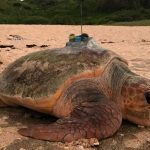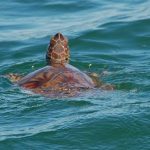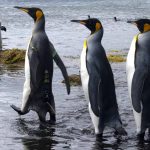← Back
How deep are bottlenose dolphins diving?

Bottlenose dolphins have been studied more in shallow waters than in deep ones. However, they do live in deep waters, for example around the Bermuda Island.
Monitoring their diving behavior there using Argos PTTs leads to different estimates of their diving capabilities than previous studies.
The bottlenose dolphin (Tursiops spp.) is perhaps the best-known and most-studied dolphin species (see also Tracking bottlenose dolphins by night in narrow channels). It lives in a range of habitats from temperate to tropical waters. However, the species encompasses several ecotypes, that live in different habitats, have distinct behaviors and thereby varying ecophysiological pressures for survival.
Most studies have concentrated on near-shore groups, which may have biased some conclusions about the species’ diving capabilities.
For example, in Sarasota Bay, Florida, dive depths and dive durations for bottlenose dolphins were determined from archival time-depth recorders. Dive depths of dolphins in Sarasota Bay are limited by the shallow nature of the Bay, which has a maximum depth of 4 m. Most of the dives of three tagged dolphins were less than 30 s in duration, with occasional dives exceeding 185 s, and shorter dives tended to occur at night.
Tracking Bottlenose Dolphins around Bermuda
Argos-based satellite-linked time-depth transmitting tags were used to examine surface position, and dive behavior in bottlenose dolphins around Bermuda, a deep-water site differing greatly from Florida’s west coast. Four dolphins (1 female and 3 males) were caught and tagged off Bermuda in August 2016.
Records that included: 1) depth, 2) duration, and 3) postdive shallow interval were considered in the analyses, with only dives below 50 m depth and longer than 30 s transmitted, to save battery. The tags transmitted data for 65–69 days. The three males stayed close to Bermuda, while the female ranged up to several hundred kilometers from Bermuda, through the Sargasso Sea.
More info about animal tracking with Argos
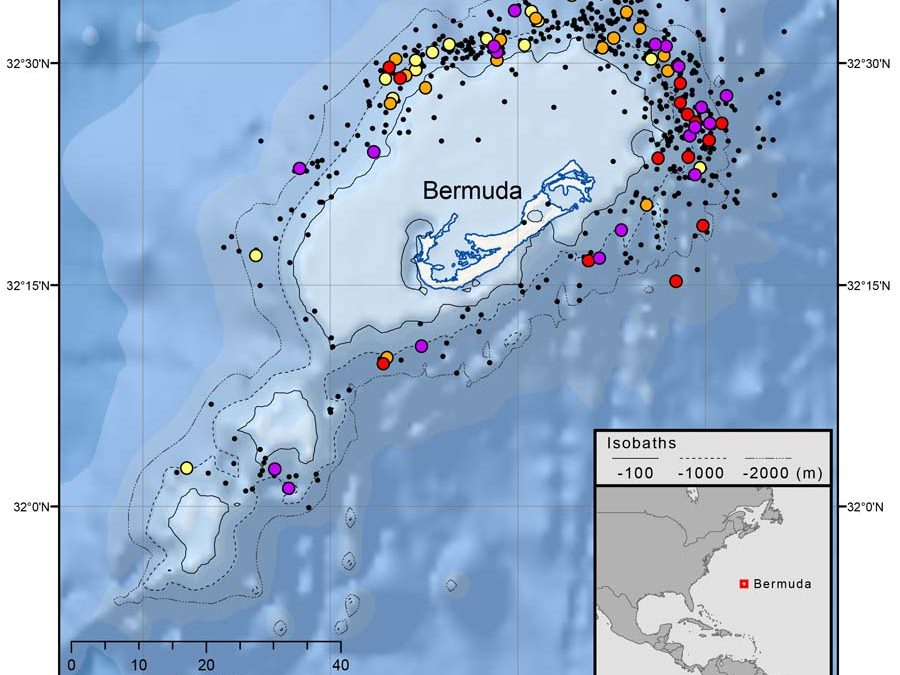
Diving Statistics of Bottlenose Dolphins
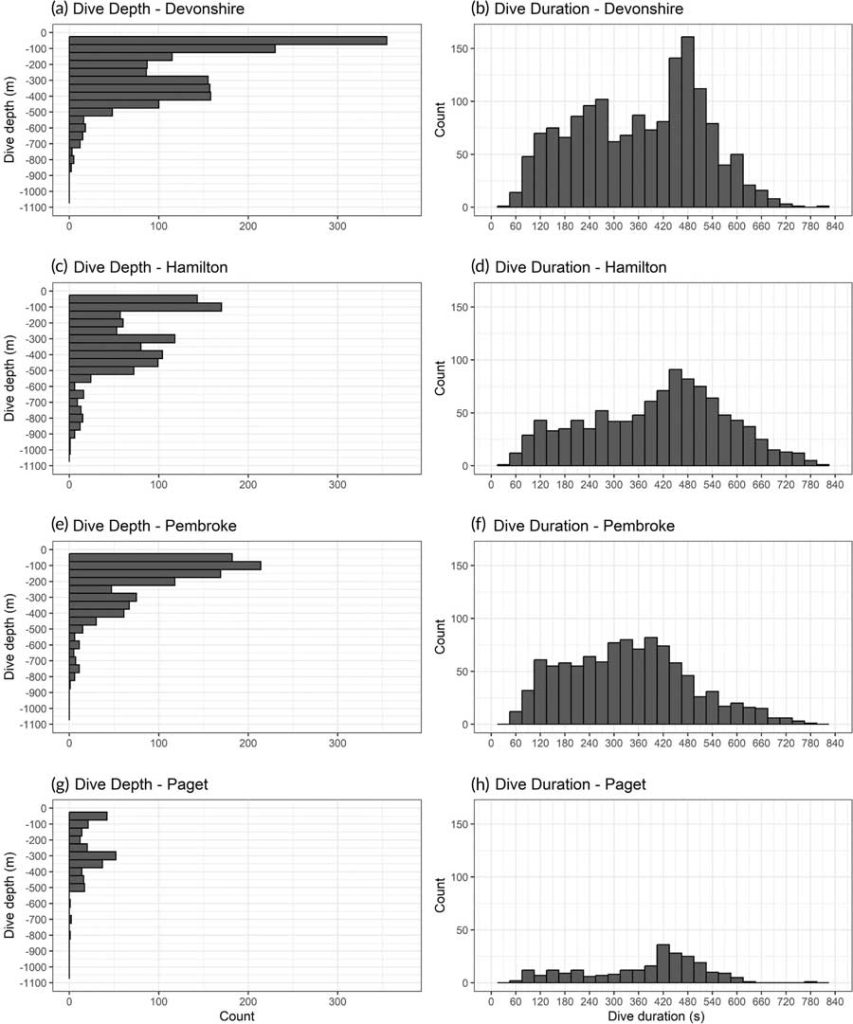
Statistics were computed on the recorded dives, showing that deeper dives were generally longer, especially when lasting over 272 s. The relation with dive depth for the shorter dives was less clear, possibly because of changes in foraging effort. It seems that after the longer dives, the bottlenose dolphins stayed longer within the upper 50 m before diving again.
A clear difference was observed between day and night. Most dives occurred at night, the dolphins staying longer in the upper 50 m during the day, probably due to vertical movements of their prey. This kind of behavior has been observed in a number of cetacean species.
Dives reaching 1,000 m and exceeding 789 s were recorded (the longest being 826 s — 13.8 min), providing evidence that the offshore bottlenose dolphin ecotype (maybe a species) can perform deep and long dives (below 199 m and longer than 272 s), and is doing so regularly.
Based on the dive behavior, the behavioral aerobic dive limit was estimated to be between 560–666 s (9.3–11.1 min) in adult dolphins in this population. Thus, bottlenose dolphins may have the capacity for both long and deep dives to access food in the water column.
A better understanding of the physiological capacities of bottlenose dolphins should help in understanding their limit for survival, and thus strengthen conservation efforts of the species.
This study was approved by the IACUC at Texas A&M University Corpus Christi (TAMUCC-IACUC AUP#04–11), the Bureau of Medicine (BUMED, NRD-1015), and by a research permit issued by the Bermuda Government, Department of Environment and Natural Resources (Research permit number SP160401r).
Reference
- Fahlman, A., Tyson Moore, R. B., Stone, R., Sweeney, J., Trainor, R. F., Barleycorn, A. A., McHugh, K., Allen, J. B., & Wells, R. S. (2023). Deep diving by offshore bottlenose dolphins (Tursiops spp.). Marine Mammal Science, 1–16. https://doi.org/10.1111/mms.13045
- Dr. Randall Wells, invited speaker to IUCAWA 2014
Top photo: A bottlenose dolphin (Adam Li, NOAA)

